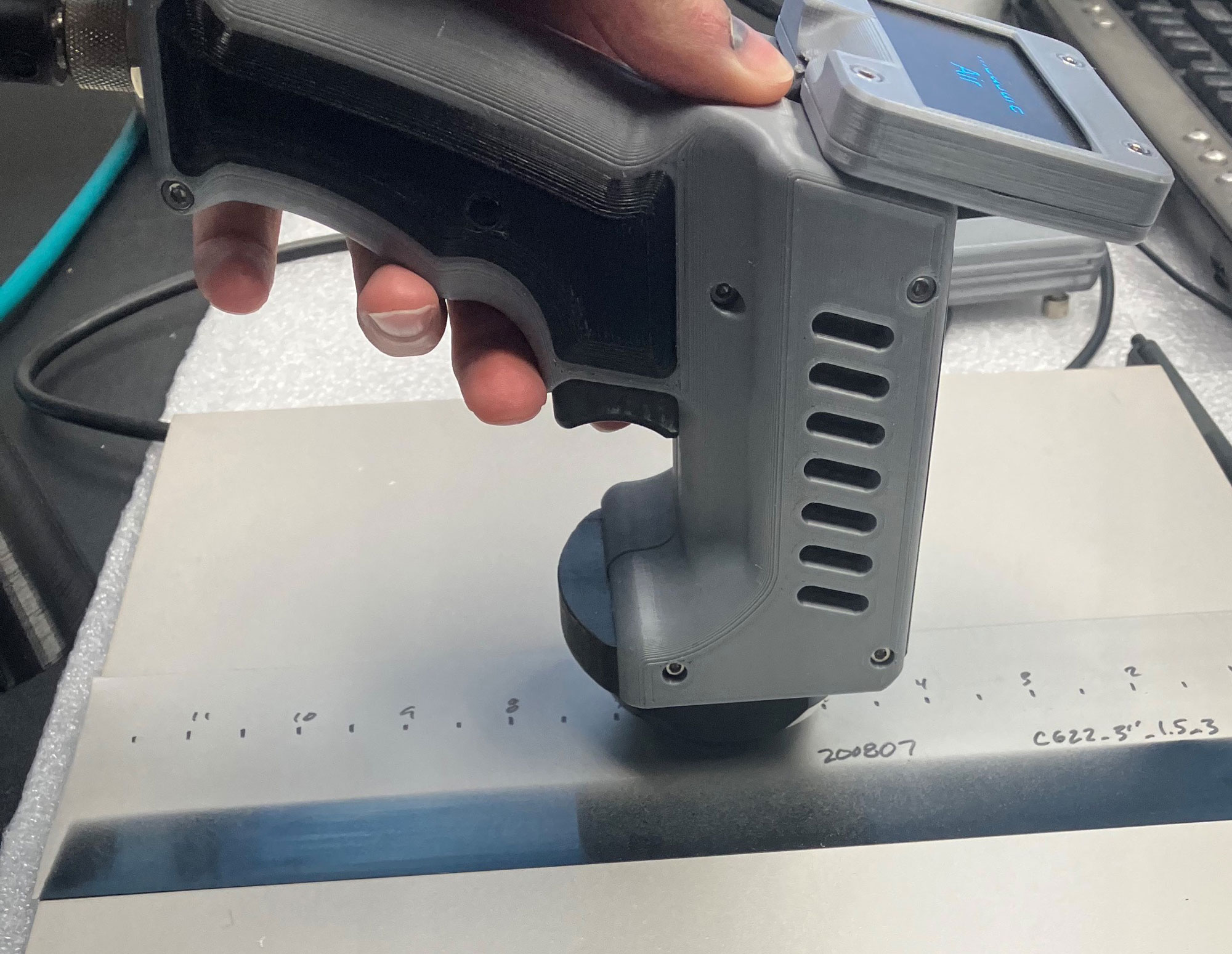Compass Technology Group’s various probes and antennas can be integrated with miniaturized microwave analyzers to characterize a range of materials, composites, and components. We offer measurement systems based on the idea of sensor and analyzer integration, including handheld and robotically mounted Microwave NDE systems. Microwave NDE is growing in importance because measurements that were traditionally restricted to the research laboratory can now be brought to the factory floor. This enables more efficient and cost-effective material and component manufacturing, repair, and quality assurance.
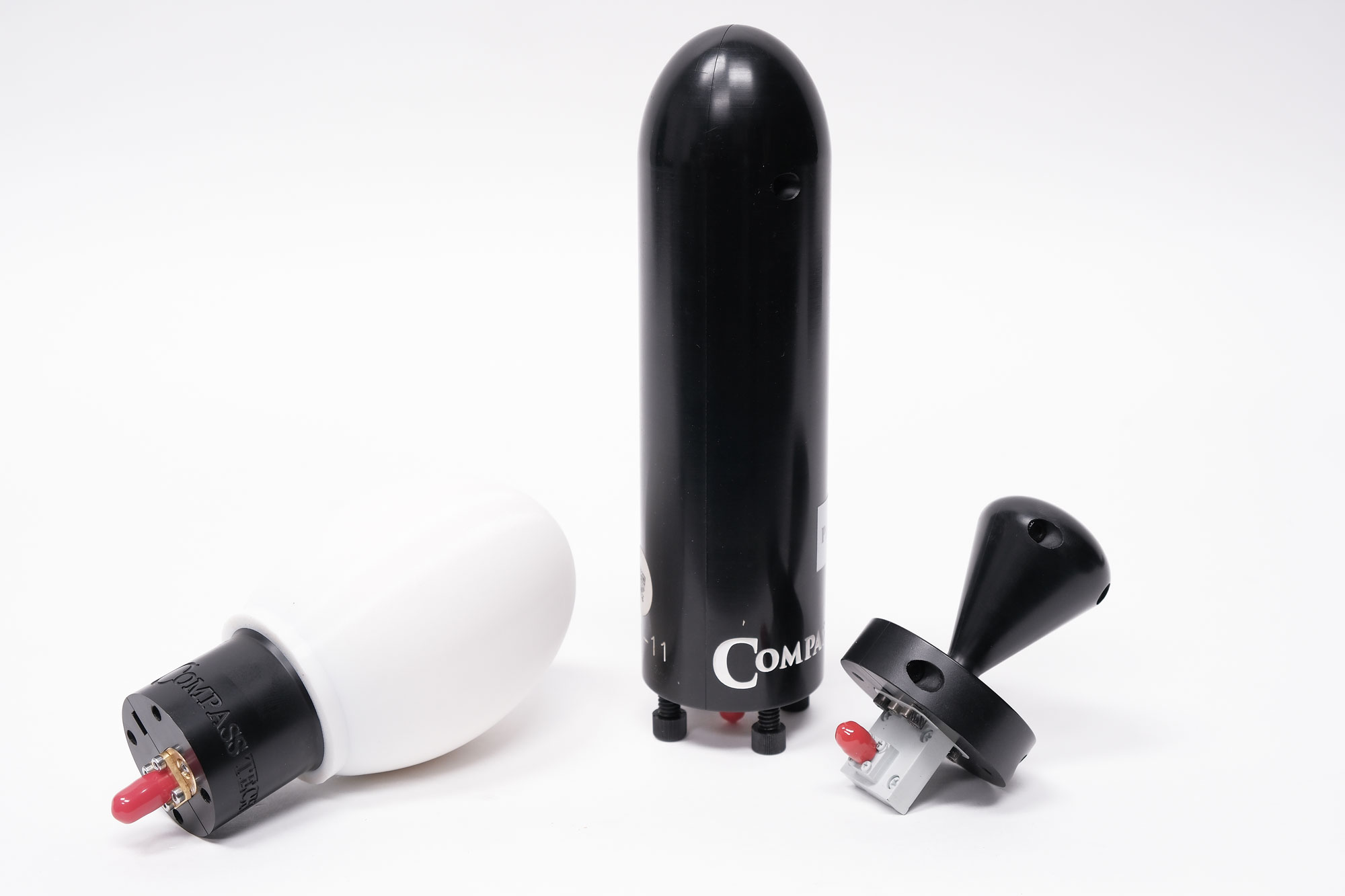
AMMP Spot Probe Family
Advanced Microwave Mapping Probes (AMMP) are compact, ruggedized antennas for characterizing materials and components at microwave or millimeter wave frequencies. Unlike traditional antennas, AMMP spot probes are optimized for illumination of a surface that is near the end of the probe. AMMP integrates a shaped dielectric body with internal radiator components to approximate the performance of a traditional laboratory lens system, but in a very compact package. It was developed by applying Computational Electromagnetic (CEM) design optimization to both the dielectric and internal conductive components together. This is in contrast with traditional dielectric rod probes, which insert shaped dielectric rods into traditional waveguide or horn antennas.
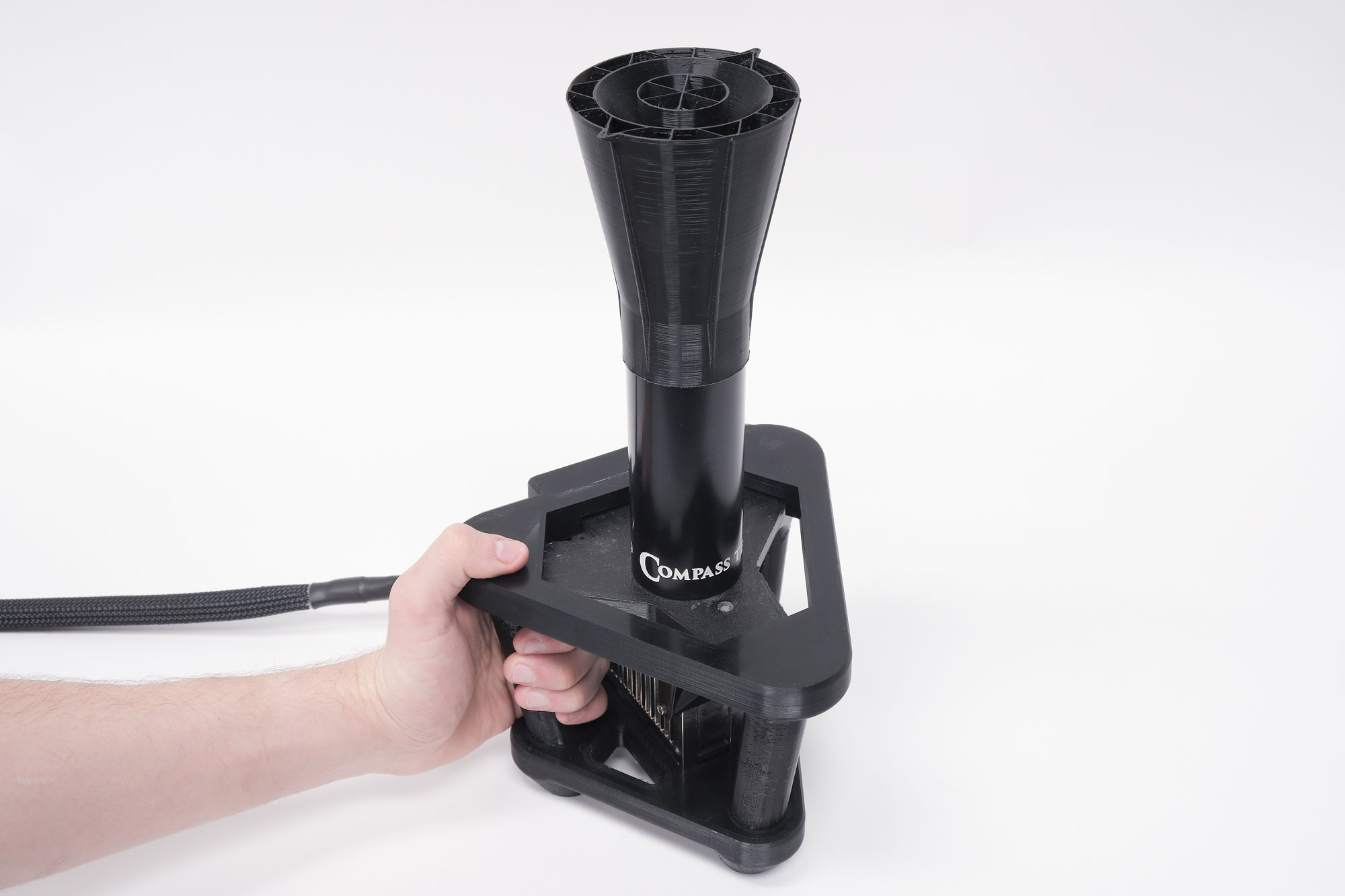
Handheld AMMP System
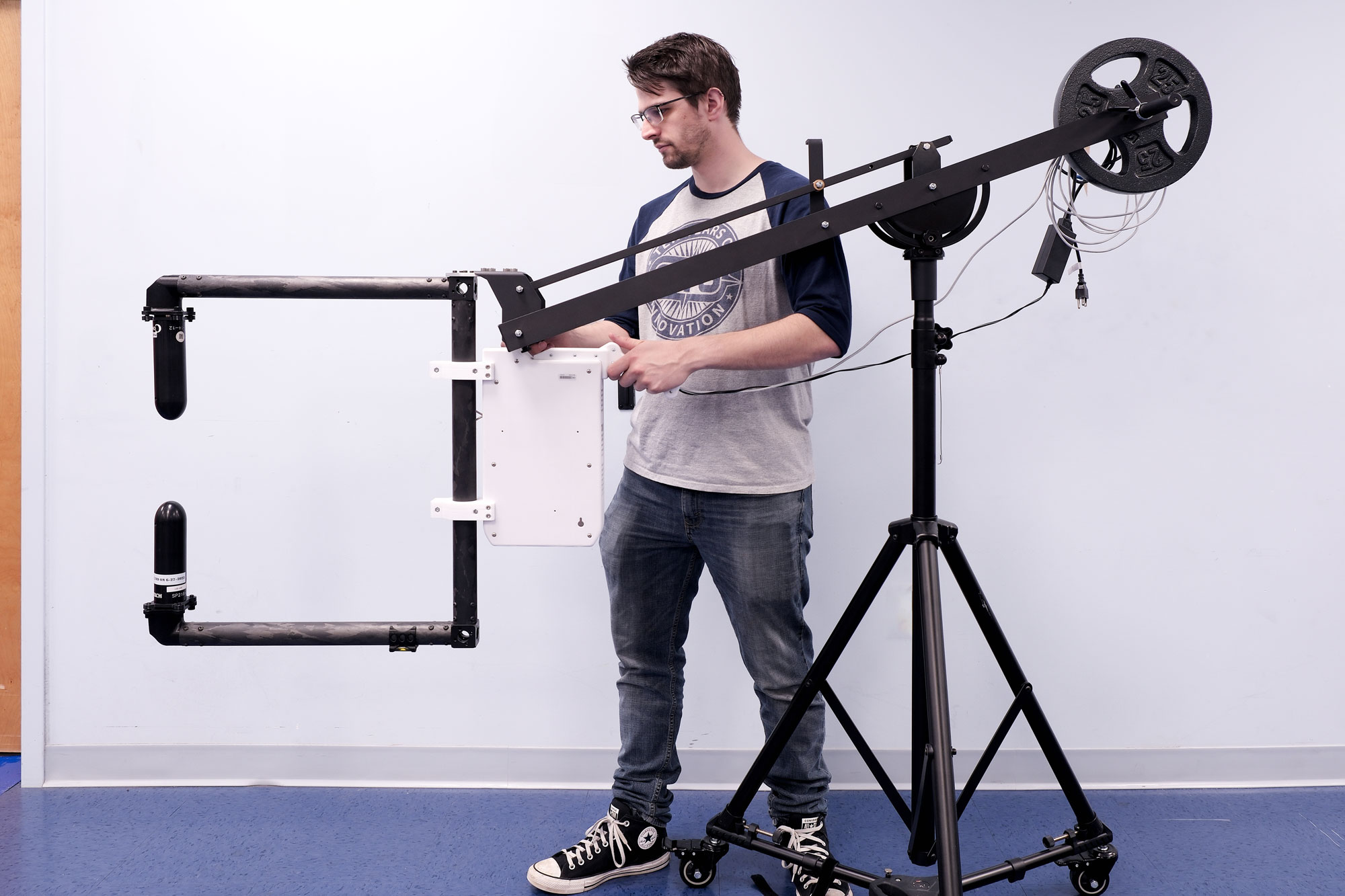
Microwave Calipers
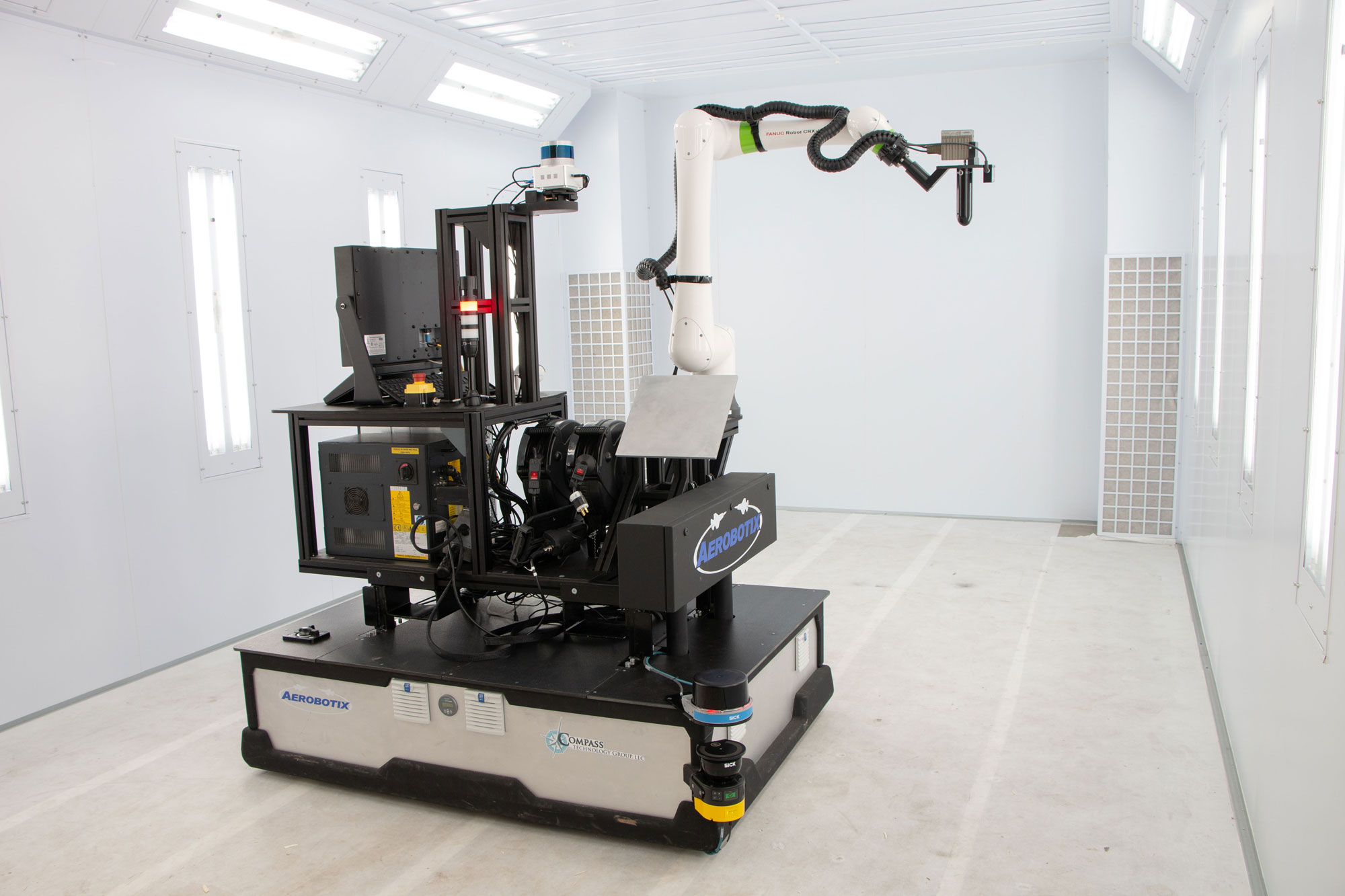
Adaptive Radome Diagnostic System
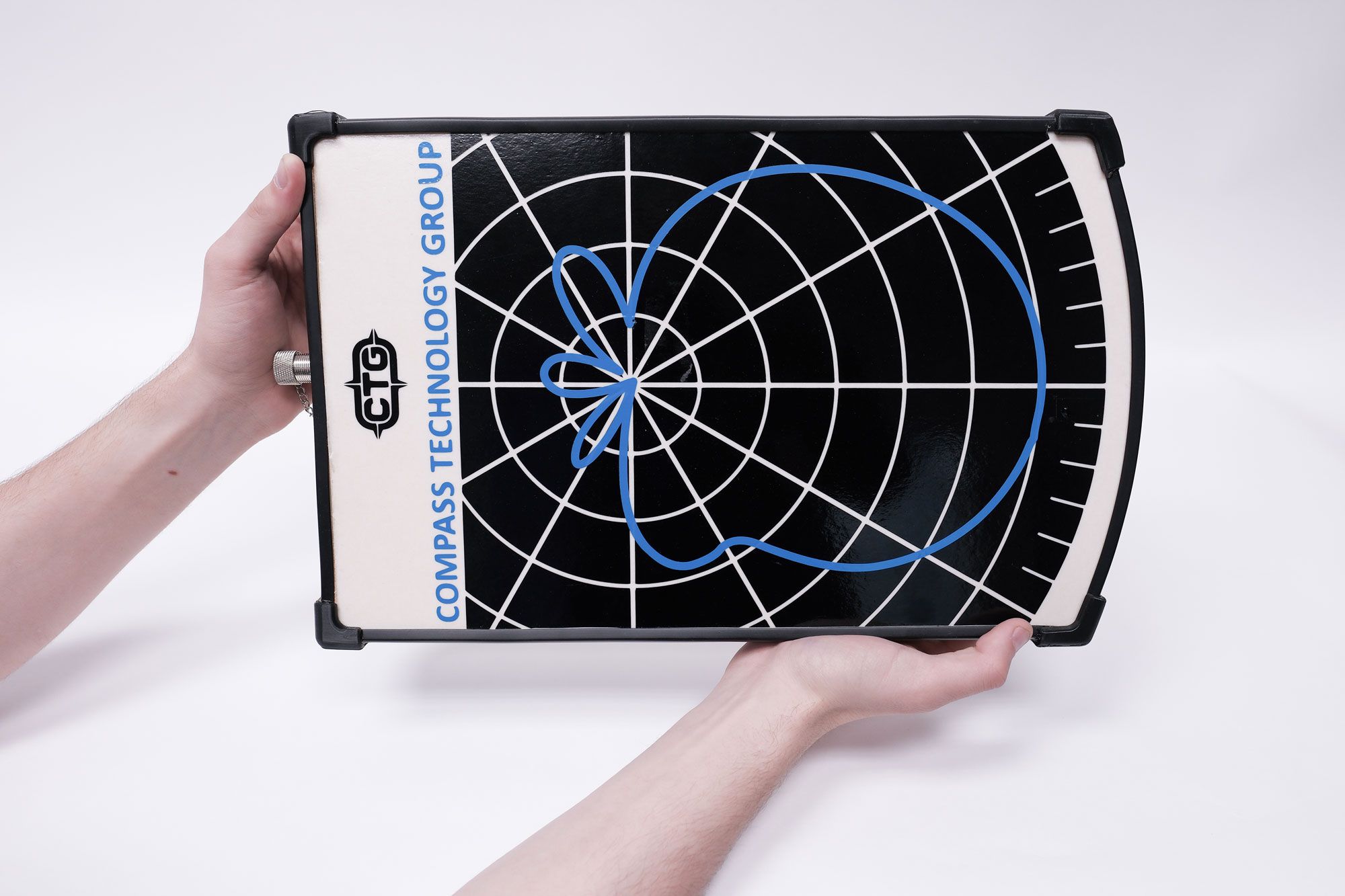
FLAT Family: Smaller and Lighter Horn Antennas
